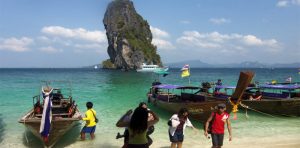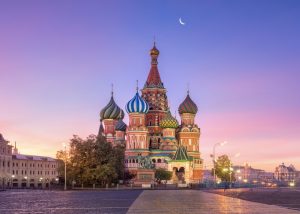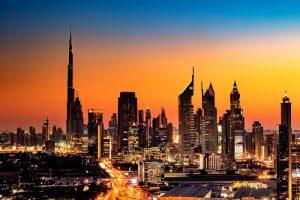Asia is the largest of the five continents on Planet Earth in area and population. The term Asia refers conventionally to the eastern portion of the Eurasian landmass plus the island country of Japan and the island nations of Maritime Southeast Asia. The continent is situated almost entirely north of the equator except for some Southeast Asian islands. Asia is connected to Africa by the Isthmus of Suez and borders Europe (part of the same landmass) along the Ural Mountains and across the Caspian Sea. Other than being one of the most densely populated continents in the world, Asia has to its credit the tag of being the birthplace of the most mainstream religions including Christianity, Hinduism, Jainism, Buddhism, etc. It is also the site of many of the first civilizations. Further, Asia is home to two of the Seven Wonders of the World – The Great Wall of China, known to be the largest manmade structure on earth, and the epitome of love – the pristine white Taj Mahal of India. The Indian Ocean to the south, the Pacific Ocean on the west, the Arctic Ocean to the north, and the Ural Mountains to the east, Asia is divided into six different regions and 57 countries each offering something unique to visitors. The coldest of these regions, the North Asia Region is also known as Siberia. Covered with snow for most part of the year, this area is inhabited by the fewest number of people. It is more known for its Siberian Tigers and Husky Dogs. In contrast, East Asia is the most populated of all parts of the continent, and China that falls in this region is the most populated country in the world. Mandarin a key language of the area, is also the most spoken language in the world. Moving to Southwest Asia, generally referred to as Middle East, this region is mostly covered by desert. This region spans the United Arab Emirates, Turkey, Iran, Jordan among others. It is also known as the ‘crossroads of the world’ considering three continents Asia, Africa, and Europe come together at this point. The Dead Sea located here, is the world’s saltiest water body, and is the lowest point on the Earth. The former Soviet republics together form Central Asia. Retaining a lot of its old-world charm, many people in this country still work with cattle to earn a living. With the tallest mountain peak in the world, the Mount Everest in its embrace, the South Asian region of Asia has India – the largest country in this region with a population of over one billion people. Known for its diverse cultures, the countries in this part of Asia offer numerous architectural marvels and heritage sites. The final region, Southeast Asia is made up of a number of island countries. The land of the rising sun- Japan and Indonesia are known to be leaders in manufacturing goods in this region. Owing to a great amount of rainfall here, it is one of the largest rice producing areas in the world.
+91 9610450077/ +91 6378442633
cocoonholidayspl@gmail.com




